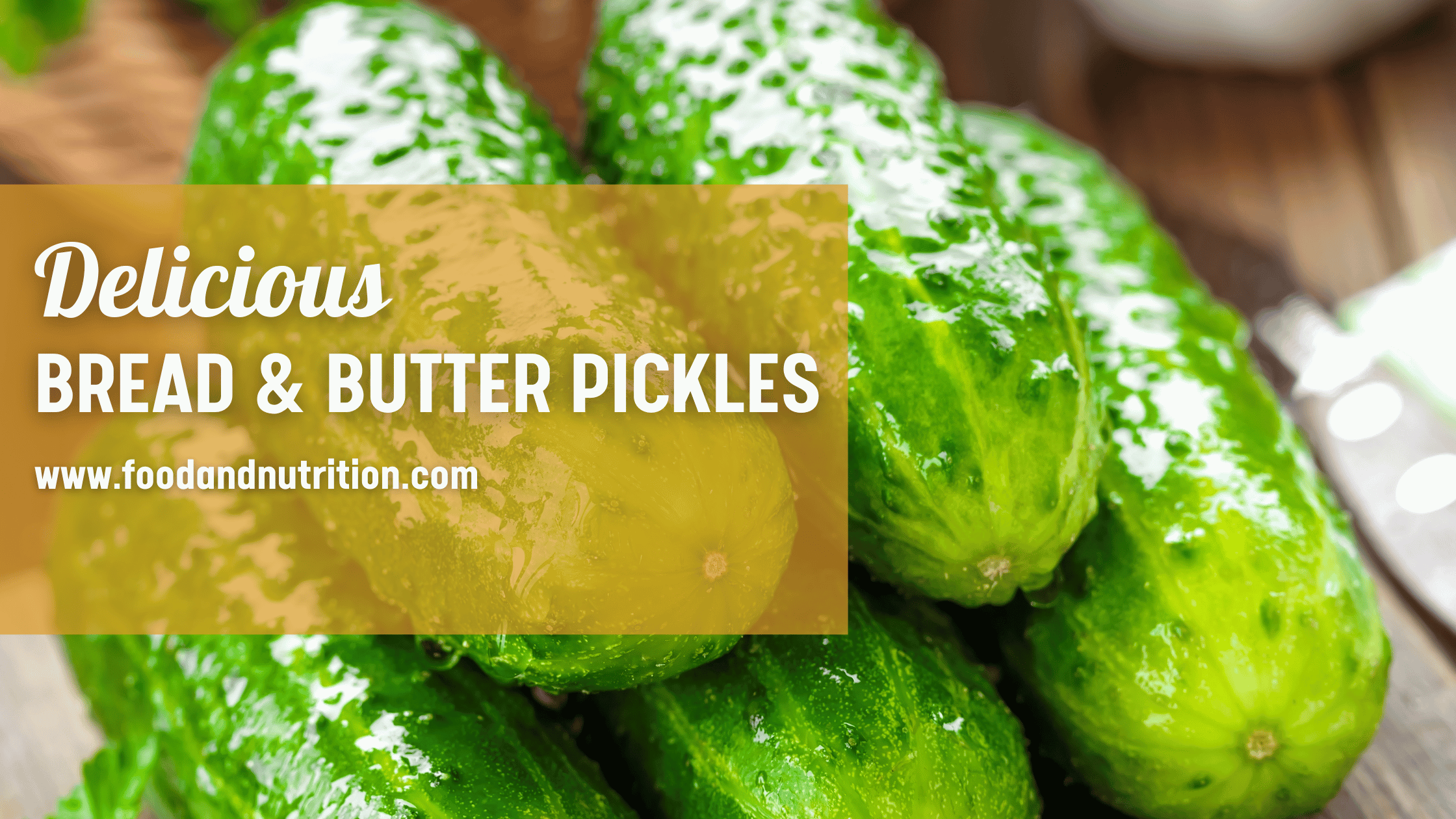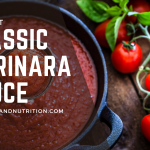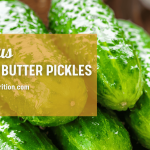Bread and Butter Pickles: A Tangy Delight for Every Meal

Bread and butter pickles, a delightful condiment that balances the sweet with the tangy, have long been a staple in kitchens across the globe. But where did this peculiar name originate, and how did these pickles become a must-have in every meal? This blog explores the rich history, nutritional benefits, and versatile uses of bread and butter pickles, offering insights and tips from N. Jay Sorensen, RD, to elevate your culinary experiences.
A Slice of History
Bread and butter pickles trace their roots back to the Great Depression, a time when resourceful homemakers would pickle cucumbers with leftover brine to extend their shelf life. The name “bread and butter” was coined because these pickles were an affordable staple, often eaten with bread and butter during those lean times. This tradition of pickling not only showcased the ingenuity of past generations but also highlighted the enduring appeal of these pickles’ unique sweet and tangy flavor profile.
Why the Fervor?
The popularity of bread and butter pickles lies in their unique taste and texture. Unlike their dill counterparts, these pickles offer a sweet, yet slightly spicy flavor that adds a refreshing crunch to any dish. Their versatility makes them a favored condiment for sandwiches, burgers, and hot dogs, enhancing the overall dining experience with a burst of flavor. Moreover, their ease of preparation and storage has cemented their status as a go-to choice for gatherings, from casual barbecues to elegant parties.
Ingredients Unveiled
Creating the perfect batch of bread and butter pickles requires a careful blend of quality ingredients. The stars of the recipe are pickling cucumbers, known for their crisp texture. Complementing the cucumbers are thinly sliced onions, canning salt, cider vinegar, sugar, mustard seeds, celery seeds, and ground turmeric. Each ingredient plays a pivotal role in achieving the signature taste and crunch that bread and butter pickles are famous for.
Nutritional Insights
While bread and butter pickles are a flavorful addition to any meal, it’s important to consume them in moderation due to their sugar content. However, the spices used, such as turmeric and mustard seeds, offer potential health benefits, including anti-inflammatory properties and antioxidants. Consulting with a dietitian like N. Jay Sorensen, RD, can provide further insights into how bread and butter pickles can fit into a balanced diet.
The Ultimate Bread and Butter Pickles Recipe
Ingredients
- 4 pounds pickling cucumbers 4 to 6 inches in length
- 1.5 pounds onions thinly sliced
- 1/3 cup canning salt
- Ice cubes or crushed ice as needed
- 3 cups cider vinegar
- 3 cups sugar
- 2 tablespoons mustard seeds
- 1.5 teaspoons celery seeds
- 1 teaspoon ground turmeric
Instructions
- Prepare the Cucumbers: Trim the ends from the cucumbers and slice them into 1/4 inch thick pieces. Place them in a large, deep stainless steel bowl.
- Add Onions and Salt: Incorporate the thinly sliced onions and canning salt with the cucumbers. Mix well.
- Ice Layer: Cover the cucumber and onion mixture with a 2- to 3-inch layer of ice cubes or crushed ice. Let the mixture stand for 3 hours, adding more ice as necessary to keep it chilled.
- Prepare the Pickling Liquid: In a heavy-bottomed 8-quart stainless steel saucepan, combine the cider vinegar, sugar, mustard seeds, celery seeds, and turmeric. Bring the mixture to a boil.
- Rinse the Cucumber Mixture: After 3 hours, thoroughly drain and rinse the cucumber and onion mixture. Then, add it to the boiling vinegar solution.
- Return to Boil: Bring the mixture back to a boil.
- Jar the Pickles: Carefully pack the hot pickles into prepared, wide-mouth pint jars, leaving 1/2 inch of headspace at the top. Use a nonmetallic spatula to release any air bubbles by gently running it between the pickles and the jar sides.
- Seal the Jars: Wipe the rims and threads of the jars clean, then top with hot lids and firmly screw on the bands.
- Process: Place the jars in a boiling water canner and process for 10 minutes to ensure they are properly sealed and preserved.
Notes
Serving Ideas Galore
Beyond the traditional uses as a condiment, bread and butter pickles can elevate various dishes. Try chopping them into a relish for a zesty twist on deviled eggs, or add them to your next potato salad for an unexpected crunch. Their sweet tanginess also makes them an excellent companion to grilled or roasted meats, adding a layer of complexity to simple dishes.
Chef Tips for the Perfect Pickle
Achieving the perfect bread and butter pickle is an art form. Here are some expert tips:
- Quality Matters: Select the freshest pickling cucumbers for the best texture.
- Slice for Success: Uniformly slice your cucumbers to ensure even pickling.
- Balance is Key: Adjust the sugar and vinegar ratio to suit your taste preference for the perfect balance of sweet and tangy.
Food Safety First
When making bread and butter pickles, food safety is paramount. Ensure to use canning salt without anti-caking agents or iodine to prevent cloudiness and ensure pickle quality. Always process your jars in a boiling water canner for the recommended time to prevent spoilage and ensure long-term storage safety.
A Recipe to Remember
Following the expertly crafted recipe by N. Jay Sorensen, RD, you can create a batch of bread and butter pickles that not only pays homage to its rich history but also brings a touch of sweetness and tang to your table. Remember to let the flavors meld in the jar for a few weeks to achieve the perfect balance of flavors.
In Conclusion
Bread and butter pickles are more than just a condiment; they are a testament to culinary creativity and tradition. Whether you’re enjoying them as a snack or using them to enhance your favorite dishes, these pickles offer a taste of history in every bite. By following the tips and insights provided, you can incorporate bread and butter pickles into your diet in a way that’s both delicious and nutritionally balanced. So, the next time you reach for a jar, remember the journey these pickles have taken to bring a burst of flavor to your plate.
Join us on this flavorful adventure, and let the sweet crunch of bread and butter pickles inspire your next culinary creation. Share your experiences and favorite ways to enjoy bread and butter pickles in the comments below, or reach out with questions to delve deeper into the art of pickling. Here’s to the enduring appeal of bread and butter pickles – a tangy delight for every meal!
- Unlock Classic Marinara Sauce: A Flavorful & Nutritious Guide

- Embracing Summer: The Ultimate Watermelon Feta Salad with Tomatoes & Olives

- Rediscovering Lebanese Salad: A Refreshing Delight with a Rich Heritage

- Eating Your Way to Healthy Blood Pressure: A Guide to Lowering Hypertension

- Perfect Roasted Leg of Lamb: A Timeless Delight for Your Table

- Romesco Sauce: A Flavorful Spanish Delight That Elevates Every Dish

